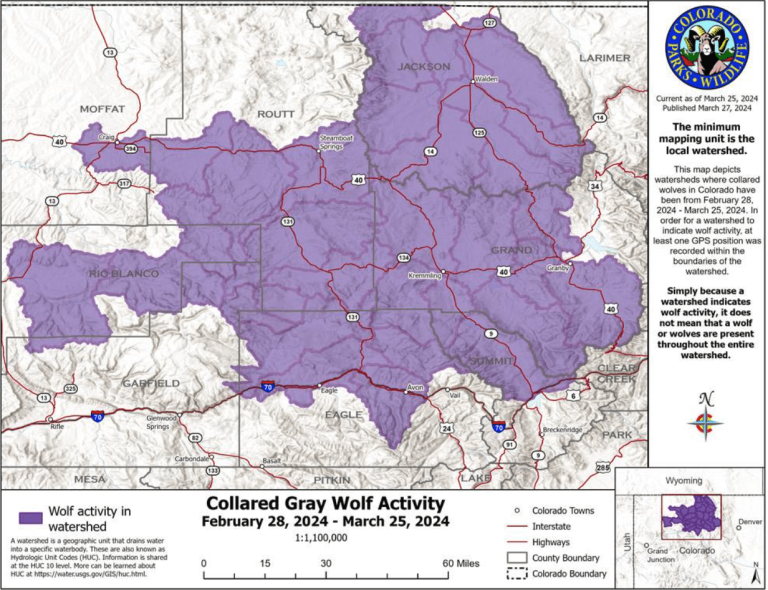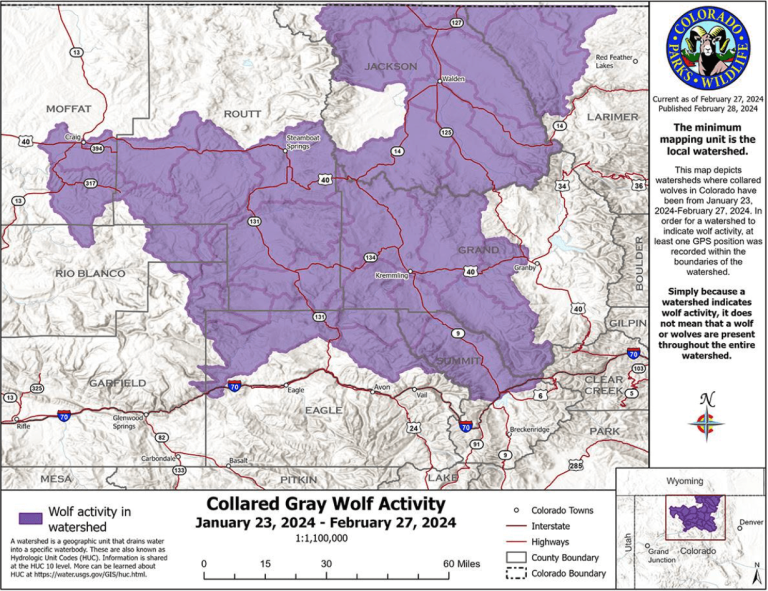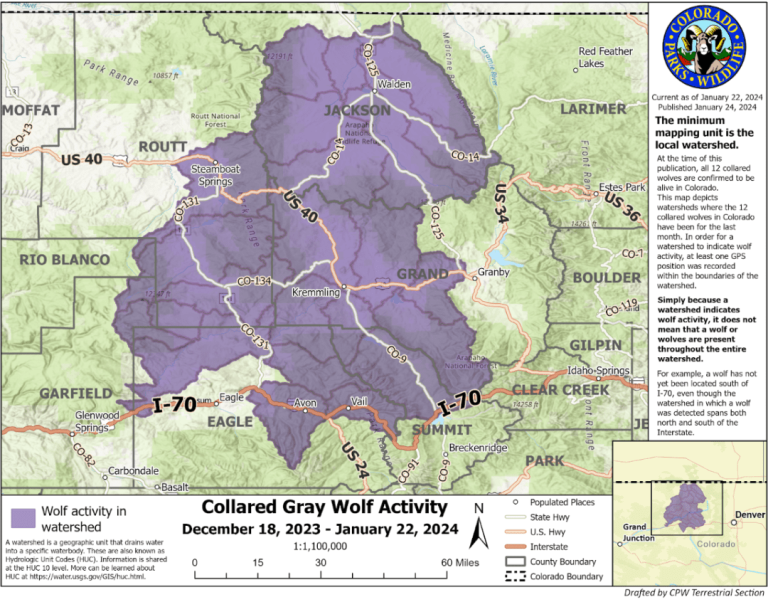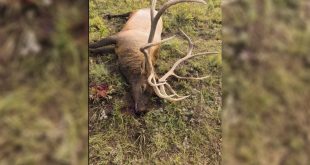General Areas Inhabited by Gray Wolves in Colorado – March Update
By Dave Shaffer

Collared gray wolf activity recorded by CPW from Feb. 28 to Mar. 25, 2024
Above is an updated map published today by Colorado Parks and Wildlife’s showing where collared wolves have been in the past month.
Notable Updates
- This map was created using GPS data from all functioning collars in Colorado.
- One of the collars placed on a wolf translocated from Oregon is no longer providing signals to CPW biologists. The animal with the failed collar is traveling with another animal with a functional collar, which currently allows CPW to monitor that animal. CPW has confirmed that the animal with the malfunctioning collar is still alive based on visual confirmation from an airplane.
- A collar on another wolf has been identified as partially functional and may not be fully functional in the near future.
- There have been no wolf mortalities in Colorado and no reported livestock depredation in the last 30 days.
For comparison, below is the map for the previous month.

Collared gray wolf activity recorded by CPW from Jan. 23, to Feb. 27, 2024
Above is an updated map published today by Colorado Parks and Wildlife’s showing where collared wolves have been in the past 35 days. This map was created using GPS collar data collected from all collared wolves in Colorado.
Notable movements
This wolf collar data shows that two wolves traveled broadly in the last month from western Routt County into eastern Moffat County.
For comparison, below is the original map.

Collard gray wolf activity recorded by CPW from Dec.18, 2023 to Jan.22, 2024.
About the GPS collar data
- Currently, the collars are programmed to record a position every four hours.
- Once four locations have been recorded, the packet of four locations is then transmitted via satellite to CPW biologists.
- The frequency of both position recording and transmission of the data can be delayed by a number of factors such as dense cloud cover, closed terrain, etc.
- By looking at the data, CPW staff can learn where wolves have been, but they cannot tell where wolves are at a current point in time, nor can they predict where the wolves will go.
- To protect the wolves, specific GPS data will not be shared.
The TRUTH of Today’s WOLF Science | Eastmans’ Journal Podcast
https://youtu.be/FLs1e3J0ukg?si=CxEl74DHykFI-_L6
In episode 37 of the Eastmans’ Journal Podcast, Ike Eastman and guests talk about wolves, science, mule deer and conservation. Ed Arnett and Jim Hefflefinger have been long-time advocates for using sound science to manage wolves, mule deer health and habitat. If you are a mule deer enthusiast hoping for a rebound in their population, then this is an episode you wouldn’t want to miss! Ike co-hosts this episode with Jim Huntsman of @thewesternhuntsman8315 podcast.
 Eastmans' Official Blog | Mule Deer, Antelope, Elk Hunting and Bowhunting Magazine | Eastmans' Hunting Journals
Eastmans' Official Blog | Mule Deer, Antelope, Elk Hunting and Bowhunting Magazine | Eastmans' Hunting Journals





